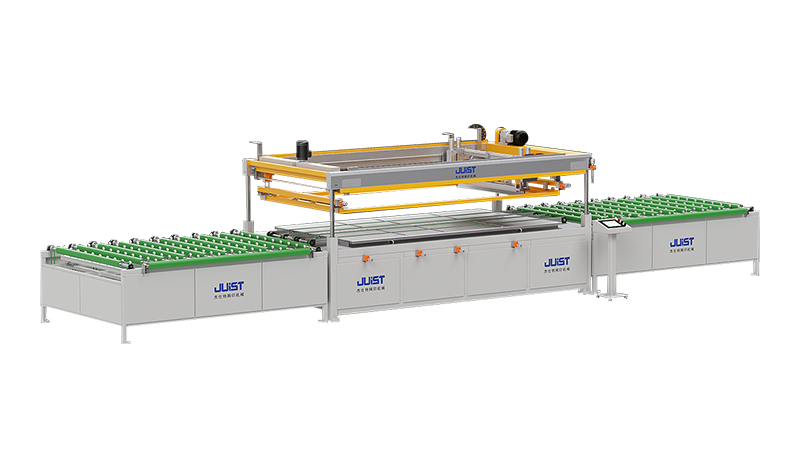+86-519-83387581
The working principle of CCD camera intelligent imaging system is to capture the pre-set printing MARK points on the substrate through the CCD camera arranged at a specific position of the printing machine. MARK points are used as reference marks for printing positioning and are usually printed on the substrate in special shapes, colors or patterns. With its high resolution and high sensitivity, CCD camera can clearly obtain the image information of MARK points and transmit these image data to the control system of the printing machine in real time. The control system uses advanced image processing algorithms to accurately identify and analyze the MARK points in the image and calculate the deviation between the current position of the substrate and the standard printing position. Based on this calculation result, the control system quickly issues instructions to drive the mechanical transmission components of the printing machine to accurately adjust the position of the substrate or the position of the printing screen to ensure that the printed pattern can be accurately printed at the target position of the substrate.
In the field of high-precision product printing, the requirements for printing accuracy are almost harsh. Taking the printing of flexible circuit boards in the electronics industry as an example, the width and spacing of the lines are often at the micron level. A slight deviation will cause the lines to short or break, affecting product performance. The CCD camera intelligent imaging system plays an irreplaceable role in this situation. Traditional printing alignment methods, such as mechanical positioning or simple photoelectric sensing positioning, are difficult to meet such high-precision requirements. The CCD camera can capture the position difference at the micron level, and through the accurate identification of the MARK point, the position deviation of the substrate can be controlled within a very small range. Even if the substrate is slightly offset, stretched or deformed during the roll-to-roll transmission process, the CCD camera intelligent imaging system can promptly detect and feedback to the control system, and make real-time dynamic adjustments to ensure that each print can be accurately aligned, thereby achieving high-precision printing effects and ensuring the quality stability of high-precision products.
In addition to high precision, the stability of alignment performance during the printing process is also an important indicator for measuring the quality of printing equipment. In long-term continuous printing operations, factors such as the material characteristics of the substrate, changes in ambient temperature and humidity, and vibrations during equipment operation may all affect the printing alignment. The CCD camera intelligent imaging system effectively overcomes these interference factors with its stable hardware performance and optimized software algorithms. In terms of hardware, the CCD camera uses high-quality optical components and durable sensors, which can maintain a stable working state in a complex industrial environment and is not easily disturbed by environmental factors. In terms of software, the image processing algorithm has undergone a lot of actual testing and optimization and has strong anti-interference capabilities. Even if the MARK point is partially blurred due to ink coverage, dust adhesion, etc., the system can accurately determine the position of the MARK point through the intelligent recognition algorithm to ensure the accuracy of the alignment. During the entire printing process, the CCD camera intelligent imaging system continuously monitors and adjusts the MARK point, always maintaining stable alignment performance, and ensuring that the printing quality will not fluctuate due to long-term operation.
In terms of improving printing efficiency, the CCD camera intelligent imaging system also performs well. In traditional printing methods, manual alignment or low-speed mechanical alignment processes often take a lot of time and become a bottleneck restricting printing efficiency. The auto (CCD) roll to roll screen printing machine using the CCD camera intelligent imaging system can achieve fast automatic alignment. When the substrate is transferred to the printing station, the CCD camera instantly completes the photo recognition and position calculation of the MARK point, and the control system issues adjustment instructions almost at the same time. The whole process is completed in a very short time, which greatly shortens the printing preparation time. Moreover, the system can work with other automation modules of the printing machine, such as automatic feeding, automatic receiving, automatic ink supply system, etc., to achieve seamless connection of the printing process. The printing machine can continue to perform precise printing operations at high speed without frequent shutdown for manual intervention or adjustment, which greatly improves the printing production efficiency and meets the needs of large-scale production in modern industry.
In actual production applications, the advantages of the CCD camera intelligent imaging system have been fully verified. In the shell printing of precision instruments and meters, not only the pattern is clear and the text is accurate, but also it needs to be accurately matched with the internal structure. With the help of this system, the printed pattern can be accurately printed in the specified position to ensure the overall beauty and functionality of the product. In the field of high-end packaging printing, the overprinting accuracy of complex patterns is extremely high. The CCD camera intelligent imaging system can ensure the precise alignment between multi-color printing, so that the printed products present a delicate and realistic effect, and enhance the added value of the product.









